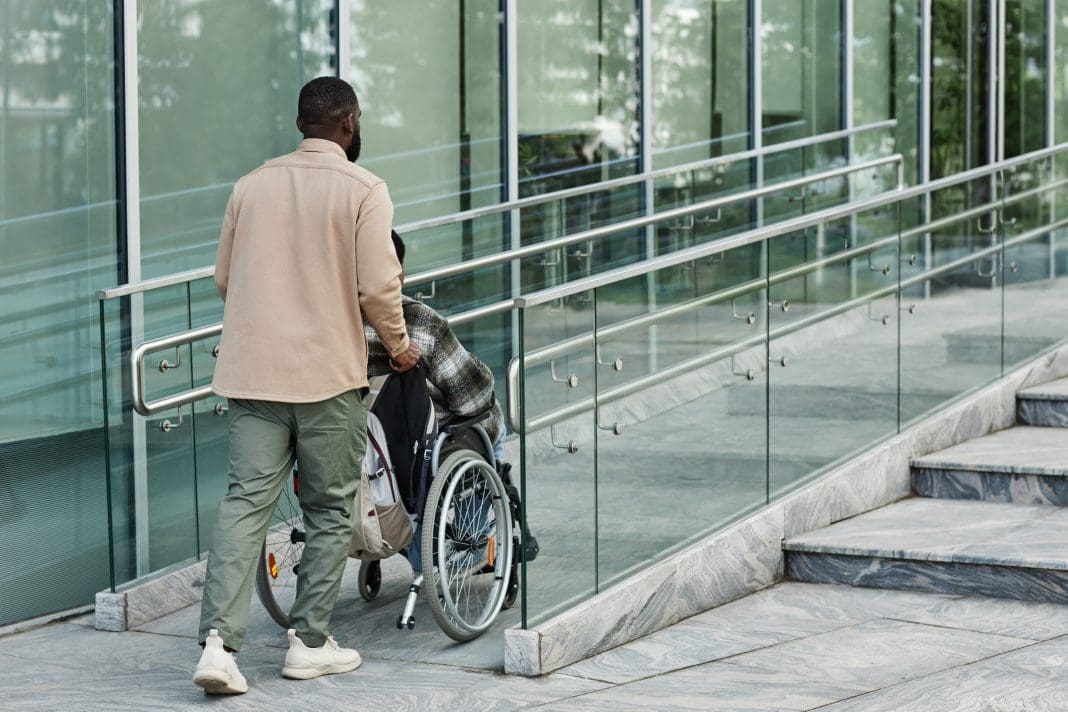About Access was invited to assess proposals for a new toilet block on a historic site, but found more accessibility issues elsewhere
A country house which is recognised as a fine example of Elizabethan elegance and beautiful gardens has also, sadly, presented us with several instances of inaccessible amenities.
Perhaps unusually, the main facility we looked at – proposals for a new toilet block – didn’t present any issues that would require a major refit. However it is the route to the facilities that is letting the scheme down badly.
The new block is needed to replace one which has been demolished. The facilities will include male and female WCs as well as an accessible WC.
Accessibility to historic buildings must consider not only the site, but literally getting to the location
The big concerns are about how people who need to use the facilities can get to them safely, given the failings with the designs for the proposed ramp and steps.
The ramp is too narrow and doesn’t provide sufficient turning space at the top for a powered or manual wheelchair. Someone using a mobility scooter would require even more room.
The length of the ramp also presents a problem because it is greater than the limit recommended by guidance. At a gradient of 1:12 – the steepest a ramp should be – the maximum length should be no more than 2000mm because of concerns about fatigue for wheelchair users or the people pushing them. This design had a length of 3950mm.
A ramp can be longer than 2000mm if there is then a level landing which gives users the opportunity to stop and rest. Such a landing should contrast in colour with the rest of the ramp to help people identify the change in level and reduce the risk of them stumbling, but this one didn’t.
If the total rise of a ramp is more than 300mm then steps should be provided because some people find them easier to use. They do feature in these proposals but there is little information about them. There are no details of the risers – whether they are open or closed, or their height. There is no indication that the steps would have a corduroy tactile warning, which should be in place at the top and bottom of the steps.
What is clear is that the steps are too narrow, and at the top they are extremely close to the door for the male WC. If someone steps out, the lack of space could cause a person at the top of the steps to tumble backwards.
Whether you have a ramp or steps, handrails should be provided at both sides and these should be of a size and shape that are easy to grip. The ends should extend beyond the top and bottom of the ramp to allow people to take support before using the ramp, and they should also be designed to prevent clothing and bags from being caught in them.
An ineffective layout reduces accessibility
As for the WCs themselves, the door to the female loo opens outwards and therefore has the potential to hit someone going to the male or female toilets. This should be reviewed with a view to changing it to inward opening.
Neither the male nor female WCs have a cubicle suitable for ambulant disabled people with such features as an outward opening door and support rails. Such a cubicle can ease demand for the accessible WC from people who don’t need the space and layout of an accessible WC.
Demand to use the accessible WC can also be reduced if the baby change facilities currently included in the design are removed. If they are included the outcome is likely to be increased wait times for all.
BS8300-2:2018 states that in the smallest of buildings it is acceptable to include baby changing facilities, but this has implications for the minimum size of some of the fittings and it should be noted that the addition of other equipment reduces the manoeuvring space for wheelchair users.
A photograph of one of the accessible WCs also indicated numerous failings in the layout with the flush on the wrong side, no dispensers, exposed pipes, the emergency pull cord tied up and a heater cluttering the transfer space.
All these items restrict the usability of the space and overall it demonstrates a lack of understanding that an accessible WC should allow a person to wash and dry their hands before getting dressed or transferring back to their wheelchair.
In some instances a person may want to wash other parts of their body so paper towels are an essential item as a hot air drier may not be practical.
The project has been planned to a tight schedule, but our advice is to slow down
They cannot afford to let their timeframe spoil the opportunity to get this right even if it means completion slips by a few months.
They should seek the input of a qualified designer with the appropriate competence and insurance because getting it right will save time and money in the long run and avoid having to make changes to provide necessary accessibility on the historic building at a later date.

















